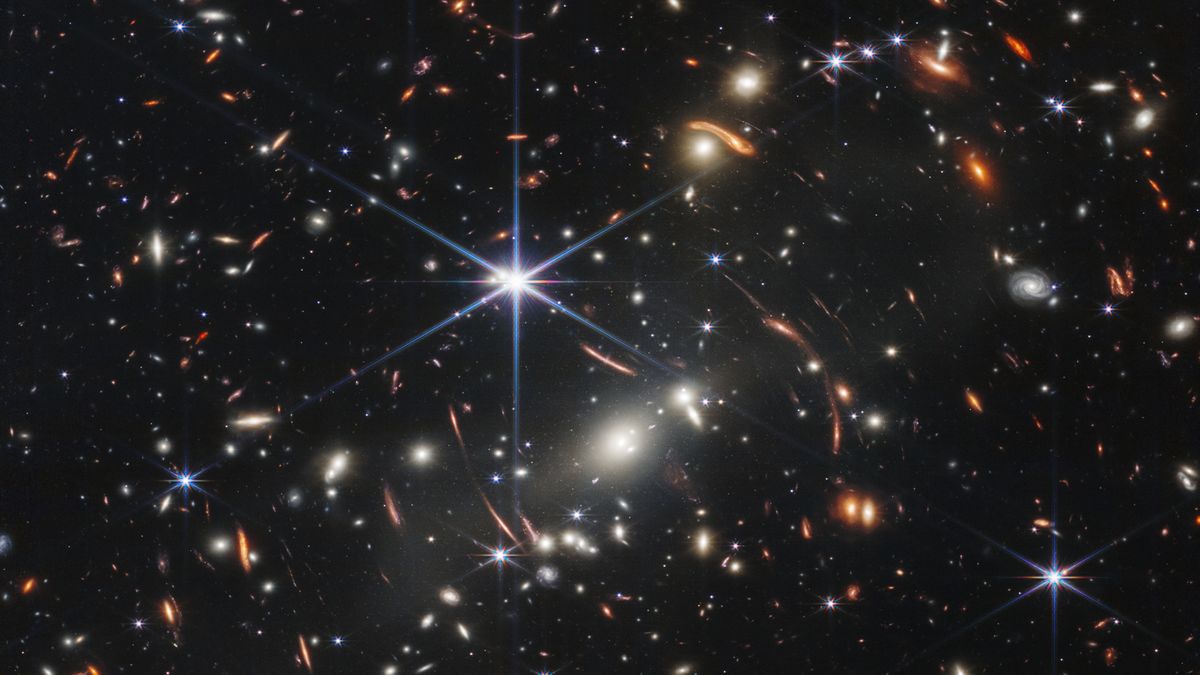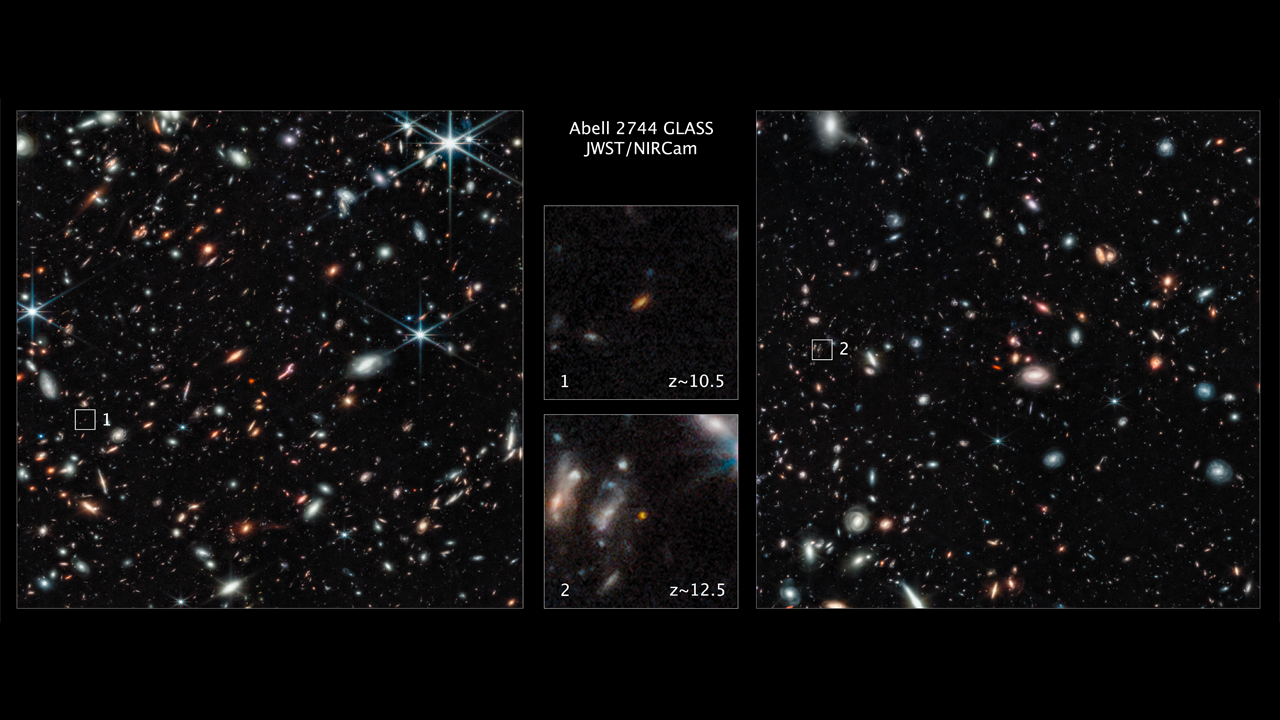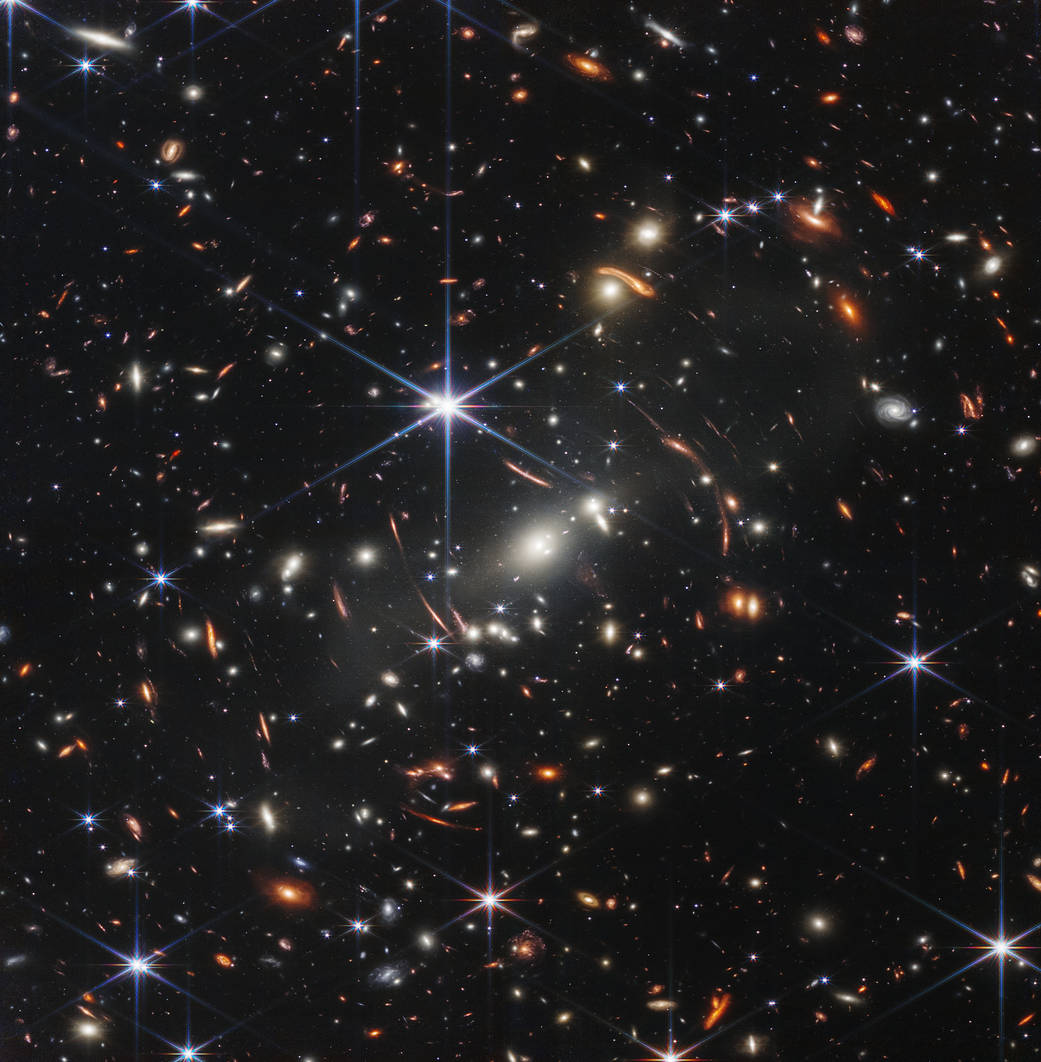James Webb Space Telescope Reveals Distances of Nearly 200 Deep-Space Galaxies

A team of astronomers using the NASA/ESA/CSA James Webb Space Telescope has measured the distances to nearly 200 deep-space galaxies, including some of the earliest galaxies formed in the universe. This is the largest and most accurate study of its kind, and it provides new insights into the evolution of galaxies.
The team used a technique called redshift spectroscopy to measure the distances to the galaxies. Redshift is a phenomenon that occurs when light from a distant object is stretched, or redshifted, as it travels through expanding space. The amount of redshift is proportional to the distance to the object, so by measuring the redshift of a galaxy, astronomers can determine its distance.
Advertisement

The team used Webb's Near-Infrared Spectrograph (NIRSpec) instrument to measure the redshifts of the galaxies. NIRSpec is a powerful spectrograph that can measure the spectra of hundreds of objects at once. This allowed the team to measure the redshifts of a large number of galaxies in a relatively short amount of time.
The team found that the galaxies in their study are located at distances of up to 13.4 billion light-years from Earth. This means that the light from these galaxies has taken 13.4 billion years to reach us, so we are seeing them as they were 13.4 billion years ago. This is a time when the universe was only about 3% of its current age.

The team's findings provide new insights into the evolution of galaxies. For example, the team found that some of the earliest galaxies formed in the universe were much smaller and less massive than galaxies today. The team also found that the rate of star formation in these early galaxies was much higher than in galaxies today.
Advertisement
The team's findings are published in the journal Nature Astronomy.
Image: This image shows a galaxy cluster called SMACS 0723. The image was taken by the James Webb Space Telescope's Near-Infrared Camera (NIRCam) instrument. The cluster is located at a distance of 4.6 billion light-years from Earth.

FAQ
What is the significance of this study?
This study is significant because it provides the most accurate measurements of the distances to nearly 200 deep-space galaxies, including some of the earliest galaxies formed in the universe. This information will help astronomers to better understand the evolution of galaxies.
How did the team measure the distances to the galaxies?
The team used a technique called redshift spectroscopy to measure the distances to the galaxies. Redshift is a phenomenon that occurs when light from a distant object is stretched, or redshifted, as it travels through expanding space. The amount of redshift is proportional to the distance to the object, so by measuring the redshift of a galaxy, astronomers can determine its distance.
What telescope did the team use?
The team used the James Webb Space Telescope to measure the redshifts of the galaxies. Webb is a powerful telescope that can see in the infrared spectrum. This allows Webb to see galaxies that are too faint and too distant to be seen by other telescopes.
What did the team find?
The team found that the galaxies in their study are located at distances of up to 13.4 billion light-years from Earth. This means that the light from these galaxies has taken 13.4 billion years to reach us, so we are seeing them as they were 13.4 billion years ago. This is a time when the universe was only about 3% of its current age.
What do the findings tell us about the evolution of galaxies?
The team's findings tell us that some of the earliest galaxies formed in the universe were much smaller and less massive than galaxies today. The team also found that the rate of star formation in these early galaxies was much higher than in galaxies today.
What are the next steps for this research?
The team plans to continue using Webb to measure the distances to even more deep-space galaxies. They also plan to use Webb to study the physical properties of these galaxies, such as their masses, star formation rates, and chemical compositions.